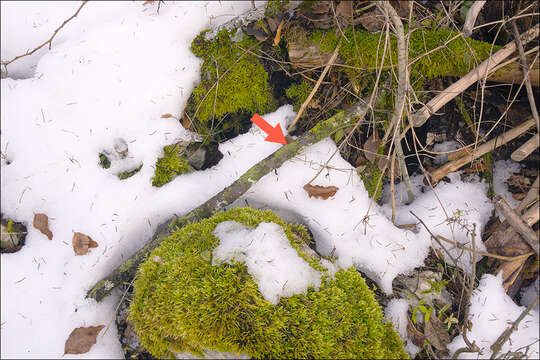Radula-complanata_1

Description:
Radula complanata (L.) Dumort., syn.: Jungermannia complanata L., Radula hallii AustinFamily: Radulaceae; Mll.Frib.EN: Even Scalewort, DE: Gewhnliche Kratzmoos, Abgeflachtes Kratz-LebermoosSlo.: no name foundDat.: Jan. 3. 2022Lat.: 46.35426 Long.: 13.69797Code: Bot_1424/2022_5172Habitat: river shore, light riparian forest, Salix eleagnos dominant tree; almost flat terrain; calcareous, colluvial ground; exposed to direct precipitations, humid and partly sunny place; average precipitations ~ 3.000 mm/year, average temperature 7-9 deg C, elevations 530 m (1.740 feet), alpine phytogeographical region (M. Wraber, 1969). Substratum: on bark of fallen, not yet rotten branch of Fagus sylvatica.Place: Lower Trenta valley, between villages Soa and Trenta, left bank of river Soa, about 400 m downstream of Matev's farmhouse, Trenta 1, East Julian Alps, Posoje, Slovenia. Comment (pertains to pictures in the Flicker album Radula complanata): Radula complanata is widespread in Europe (with an exception of far-north countries), north Africa, Asia and North America and very common liverwort in Trenta valley and elsewhere. It can be found most commonly on the trunks, branches and roots of broadleaved trees and bushes but also on rocks and other hosts in woods, thickets and hedges. From far it often looks like large green patches on tree bark. Perianths are common (see Fig. 5a), so are gemma too (see Fig. 5b, lobes' edge). It is a species which was once considered rare and in some countries red-listed. However, lately it shows a massive expansion, already in 20th and particularly 21st century, presumably because of recent reduction of air pollutants. The plant is very old. Based on molecular analysis of fossil material we know that it split from common ancestor almost 200 million years ago. Ref.:(1) Personal communication (conf.) with Doc. Dr. Simona Strgulc Krajek, Biotechnical Faculty, University of Ljubljana, Department of biology.(2) Smith A.J.E., The Liverworts of Britain & Ireland, Cambridge University Press (1991), p 237. (3) Paton, J.A., The Liverwort Flora of the British Isles, Brill, Leiden, Boston (2011), p 440.(4) Ian Atherton, Ed., Mosses and Liverworts of Britain and Ireland - a field guide, British Bryological Society (2010), p 202.(5) www.britishbryologicalsociety.org.uk/learning/species-fin... (accessed Jan.17. 2022)
Included On The Following Pages:
- Life (creatures)
- Cellular (cellular organisms)
- Eukaryota (eukaryotes)
- Archaeplastida (plants)
- Chloroplastida (green plants)
- Streptophyta
- Embryophytes
- Marchantiophyta (liverworts)
- Jungermanniopsida
- Porellales
- Radulineae
- Radulaceae
- Radula
- Radula complanata
This image is not featured in any collections.
Source Information
- license
- cc-by-nc-sa
- copyright
- Amadej Trnkoczy
- photographer
- Amadej Trnkoczy
- original
- original media file
- visit source
- partner site
- Flickr Group
- ID


